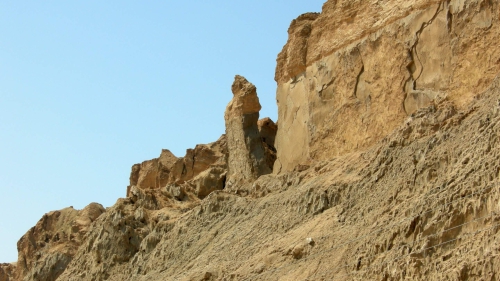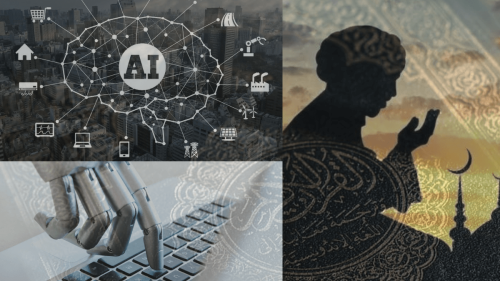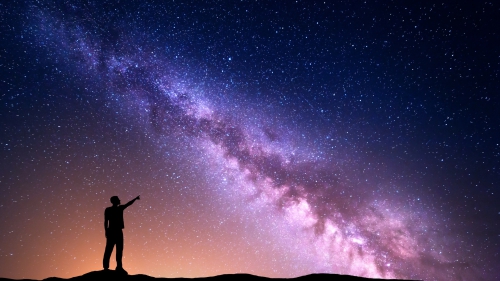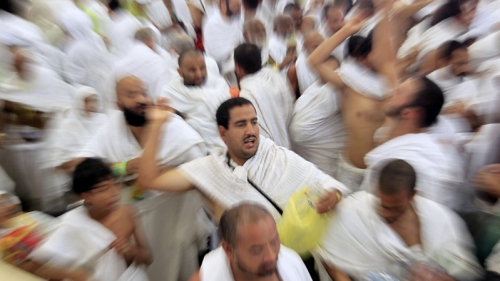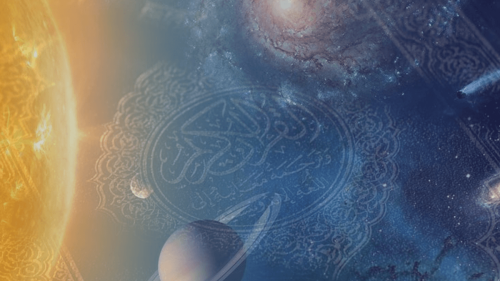What Muslims, Jews and Christians Got Wrong about the Forbidden Tree and Demons

In his book Man’s Place in Nature, the prominent European philosopher of the early 20th century Max Scheler laments the lack of having a unified idea of what man is as follows [1]:
If we ask an educated person in the Western world what he means by the word “man,” three irreconcilable ways of thinking are apt to come into conflict in his mind. The first is the Jewish-Christian tradition of Adam and Eve, including creation, paradise and fall. The second is the Greek tradition in which, for the first time, man’s self-consciousness raised him to a unique place on the grounds that he is endowed with “reason.”. . . The third idea is that of modern science and genetic psychology, which also has a tradition of its own. According to this view, man is a very recent product of evolution on our planet, a creature distinguished from its antecedents in the animal world only by the degree of complexity of energies and capacities already present on a subhuman level. These three ideas are not compatible with each other. Thus we have a scientific, a philosophical and a theological anthropology in complete separation from each other. We do not have a unified idea of man.
By and large, this proclamation still stands today. Particularly, there is a seemingly unbreachable gap between the view of modern science and that of the theistic religions, especially the Abrahamic religions, concerning what man is. In this book, I will present arguments that show that an important part of this gap is artificial and stems from a lack of proper understanding and interpretation of the Judeo-Christian-Islamic account of how life in general and the human being in particular were created.
More specifically, this is my attempt at a Quranic (and by extension, Biblical) hermeneutic pertaining to a narrow spectrum of specific mysterious topics mentioned in the Quran, employing a combination of close textual reading and modern scientific knowledge. The topics are the Forbidden Tree and the Fall of Adam narrative and the jinn mystery.
Uniquely, the holy book of Islam itself furnishes the careful reader with an exegetical key given in verse 7 of the third chapter called Al-i Imran, which the brilliant 20th century Quran commentator Muhammad Asad (born Leopold Weiss and of The Road to Mecca fame) referred to as “the key phrase of all its key phrases.” The relevant verse is as follows (using Asad’s translation) [2]:
He it is who has bestowed upon thee from on high this divine writ, containing messages that are clear in and by themselves - and these are the essence of the divine writ - as well as others that are allegorical. Now those whose hearts are given to swerving from the truth go after that part of the divine writ which has been expressed in allegory, seeking out [what is bound to create] confusion, and seeking [to arrive at] its final meaning [in an arbitrary manner]; but none save God knows its final meaning. Hence, those who are deeply rooted in knowledge say: 'We believe in it; the whole [of the divine writ] is from our Sustainer - albeit none takes this to heart save those who are endowed with insight.
This singular verse clearly indicates that there are two types of verses in the Quran: the ones with well-established (literal) meaning, and they pertain to the foundational aspects of the religion of Islam; and the allegorical ones which require deeper knowledge to appreciate the meaning thereof, with the proviso that, in the final analysis, only God knows their meaning with absolute certainty.
Notice critically here that the phrase is not “those who believe say we believe in it…” but rather “those who are deeply rooted in knowledge say we believe in it…” Why is that? I aver that the implication of that is that knowledge is a necessary (but not sufficient) element for appreciating and potentially understanding allegorical verses. A countenance to this view of mine is found among some prominent early Muslim exegetes. Abdullah Yusuf Ali mentions in his famous commentary that the great pioneering mufassir Mujahid ibn Jabr, from the tabi’un, argued that the verse should in fact read as “No one knows its hidden meaning except God and those who are firm in knowledge, who say…”
Foremost among the most alluring mysteries and symbolisms of the Quran are the concepts of jinn, the Forbidden Tree and the expulsion of Adam and Eve from paradise (a.k.a. the Fall of Adam or the Fall of Man). Notwithstanding the importance of these concepts to the Islamic religion and culture—and the ever-mounting modern scientific know-how—the contemporary Muslim understanding of them is, truth be told, nebulous.
The concept of jinn (plural form; singular form is jinni), as understood by most Muslims, is not unlike the concept of supernatural beings encountered in almost all cultures of the Earth, such as spirits, shedim, kami, fairies, demons, etc. Arguably, though, the jinn concept is much more deeply ingrained in the Muslim psyche, and as such, it is conspicuously integral to the Islamic culture. This is mainly so because the most authoritative epistemological sources of Islam, i.e., the Quran and the Hadith (the prophetic saying), present the jinn as a pivotal and ever-relevant class of created entities.
The ascription of a supernatural character to the jinn is purely speculative and irrational, as there is neither coherent textual nor scientific evidence for such an interpretation. It is, in my view, a mighty misinterpretation. The jinn interpreted as supernatural and ghostly beings have understandably fascinated people but also acted as an attractive distraction from what they actually might be.
Given the pivotal role the Quran assigns to the jinn and the related entities of devils pertaining to human wellbeing and salvation, not having a justifiably—not speciously—rational explanation for them presents a great void in properly understanding the message of the Quran and Islam, and therefore perhaps an insuperable obstacle to improving the human condition holistically.
My contention is that although the various world cultures and religions talk about the idea of spirits, fairies, demons and devils, and that is a credit to them all, the Quran and the Prophetic sayings unprecedentedly provide—as I will show in this book—strong and incontrovertible clues and details to unravel the essence of these entities, if one enlists the dot-connecting help of modern science.
Famed late astronomer Carl Sagan, for example, denounces humanity’s historical belief in demon-like entities as superstitious and ignorant. He woefully underestimates the collective wisdom of humanity across countless ages and vast geographies. He does not give the benefit of the doubt to even the giants of dialectic like Socrates and Plato in this regard [3].
Influential historian of religion Mircea Eliade criticized similarly dismissive and condescending judgment, albeit in a more general context, of the beliefs of archaic humanity by the pioneering anthropologists Edward B. Tylor and James G. Frazer as follows [4]:
Tylor and Frazer, like good positivists, regarded the magico-religious life of archaic humanity as a mass of childish “superstitions,” the product of ancestral fears or of “primitive” stupidity. But that value-judgment is in contradiction to the facts. The magico-religious behavior of archaic humanity reveals an existential awakening of man’s consciousness of the Cosmos and of himself.
Contrary to such scientistic and colonialist charges of being superstitious and primitive, my interpretation will provide a kind of a redeeming quality to all the world cultures and beliefs, from the animistic to the “organized” religions, for justifiably coming up with this notion of mostly invisible forces of nature which were affecting their lives but nevertheless were beyond the control of humanity for most of its history. In so doing, I will be offering a new hypothesis not only for the origin and universality of animistic and religious beliefs in countless ghost and demon myths but also for the influencing of the unconscious. I say “new” because my thesis on the origin and meaning of the jinn mythology, as will be presented in this book, is not found among the conventional academic explanations of myth making, neither is it offered as one of the potential explanations for the striking similarities of the demon-themed myths as well as the common claims of ghost-seeing among vastly separated—across both time and geography—groups of people worldwide [5,6].
As for the archetypes of the Forbidden Tree and the Fall of Adam, they are central to the story of the creation of humanity’s primogenitors not only in the Quran but also in the Bible. However, to the best of my knowledge, the meaning and significance of these stories have not yet been rationally elucidated.
The Forbidden Tree and the banishment of Adam and Eve from the Garden of Eden are generally interpreted either in an otherworldly sense with no concrete correspondence with the Earth and the biosphere, or—for those interpretations involving Earth-bound explanations—in an arbitrary fashion with unjustified narrative license. As a consequence, the hermeneutic imagination ran wild for the relevant Quranic and Biblical commentaries by Muslim, Jewish, and Christian scholars and learned people alike.
Among the important questions pertaining to the theme of the Fall of Adam that are not answered in a consistent and satisfactory manner by the Abrahamic religions are the following:
Where and what was the Garden of Eden?
What was the nature of the Forbidden Tree? Was it a fig tree, apple tree, wheat, or something completely different?
Why doesn’t the Quran ever use the word “fruit,” while the Bible does?
What was the nature of Adam and Eve? Were they human beings like us or something else?
If they were biological humans, why would their nakedness appear to them only upon eating from the Tree?
Why did God put the Tree in the middle of the Garden but at once forbade it to Adam and Eve?
Why is this story of Adam and Eve in the Garden presented as a unique event in both the Quran and the Bible? Because it seems that God, who is all-forgiving, did not forgive their first and only infringement, since they were banished from the Garden as a consequence of this transgression.
And, what about Satan or the serpent? What were they? What was their role?
Supposing that Adam and Eve were indeed human beings and had the option to choose, why would they need Satan or the serpent to make even the suggestion of eating from the Tree? Were they senseless automatons before that?
Overall, what is the significance and meaning of Adam and Eve story and their eating from the Forbidden Tree and the subsequent banishment from the Garden and other draconian punitive measures: a life of toil, sweat and blood, being enemies to one another, constant predation and murder, etc.?
We have two options: either this story is made up and does not correspond to anything factual or we have not been interpreting it correctly.
Islamic scholars, imams and the so-called sheiks cannot shed much scholarly light to further our understanding of these topics as they almost never go beyond rehashing what is written in the traditional sources. Popular accounts are often times replete with fantastic, sensational, and irresponsibly inconsistent elements.
Likewise, Judaic and Christian authorities have not advanced any rationally satisfactory (nonarbitrary) explanations for these narrations. In fact, studying the contemporary religious, cultural, and self-proclaimed scientific expositions on these subjects is an example of ignotum per ignotuis.
I present two unconventional ideas in this book pertaining to these topics, each groundbreaking in its own right, but complementary to one another:
(1) I propound a novel interpretation of the Forbidden Tree and the Fall of Adam archetypes. Specifically, I decipher the true meaning behind the Quranic account of Adam and Eve eating from this “forbidden tree,” exposing their private parts, incurring the punishments of having to constantly struggle for survival, and of being “enemies” with other living beings and shedding blood. This interpretation also naturally resolves another age-old Abrahamic enigma of God teaching Adam “all the names.”
(2) I show—using Islamic sources and relevant sciences—that the concepts of jinn and devils do not refer to supernatural beings, as traditionally assumed, but rather to tangible beings that are all important for the biosphere and human health and wellbeing.
The exegesis that I have developed of these motifs is strictly based on a close-reading of the relevant Quranic and Prophetic accounts with the help of physics, microbiology, microbial ecology, biogeochemistry and the fast-emerging science of microbiota.
The explication presented here on both topics might be worthwhile with significant implications for mythology, anthropology, and the role of revelation in epistemology. This is because my proposed thesis on the jinn will furnish the concepts of devils and demons a firm rationalistic footing. Similarly, the Forbidden Tree and the Fall of Adam interpretation I advance will have deep implications for the Abrahamic accounts of the creation of the human race and life, in particular, and the science-religion discussions, in general. Specifically, the Christian notion of the Original Sin and the concept of Satan will be strongly impacted.
My primary aim in writing this book is to convince my fellow Muslims that they don’t properly interpret the allegorical Quranic verses and that as a civilization they are, in the present age, oblivious to the Quran’s metaphysical potency and far removed from its civilizational entelechy. The original motivation for the ideas offered here was personal: To try to penetrate and understand some of the seemingly inscrutable Quranic verses on said topics to the extent possible in this current age. If deemed nonarbitrary and authentic, this insight into the pertinent revelation-based Quranic and Biblical texts might have profound implications for not only how humans obtain and build their knowledge, but also, more importantly, what we are and why we are here.
References
1. Scheler, Max, and Hans Meyerhoff. Man's place in nature. Boston: Beacon Press, 1961.
2. The message of the Qur'an. Gibraltar, Dar Al-Andalus, 1993.
3. Sagan, Carl, and Druyan, Ann. The Demon-Haunted World. United Kingdom, Ballantine Books, 1997.
4. Eliade, Mircea. Images and symbols: Studies in religious symbolism. Vol. 684. Princeton University Press, 1991.
5. Witzel, EJ Michael. The origins of the world's mythologies. Oxford University Press, 2012.
6. Shermer, Michael, and Pat Linse. “The Science behind Why People See Ghosts.” Skeptic, 16
May 2022, https://www.skeptic.com/reading_room/the-science-behind-why-people-see-ghosts/.
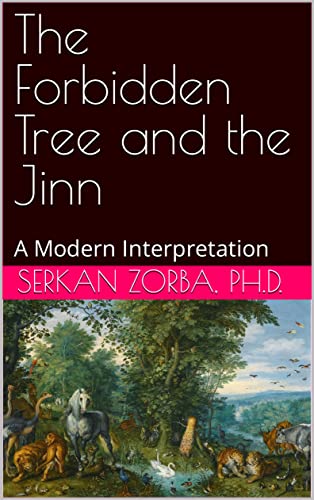 This is an extract from a recent book by Dr. Serkan Zorba titled The Forbidden Tree and the Jinn: A Modern Interpretation. Dr. Zorba is Professor of Physics in the Department of Physics and Astronomy at Whittier College, Whittier, California, USA.
This is an extract from a recent book by Dr. Serkan Zorba titled The Forbidden Tree and the Jinn: A Modern Interpretation. Dr. Zorba is Professor of Physics in the Department of Physics and Astronomy at Whittier College, Whittier, California, USA.
Foremost among the most alluring mysteries and symbolisms of the Quran are the concepts of jinn, the Forbidden Tree and the expulsion of Adam and Eve from paradise (a.k.a. the Fall of Adam or the Fall of Man). Notwithstanding the importance of these concepts to the Islamic religion and culture—and the ever-mounting modern scientific know-how—the contemporary Muslim understanding of them is, truth be told, nebulous. The interpretation developed of these motifs is strictly based on a close-reading of the Quran and the Hadith with the help of physics, microbiology, microbial ecology, biogeochemistry and the fast-emerging science of microbiota.
Topics: Creation And Evolution, Interfaith, Islam And Science, Metaphysics, Modern Society, Revelation, Satan (Iblis), Science And Religion
Views: 3059
Related Suggestions








